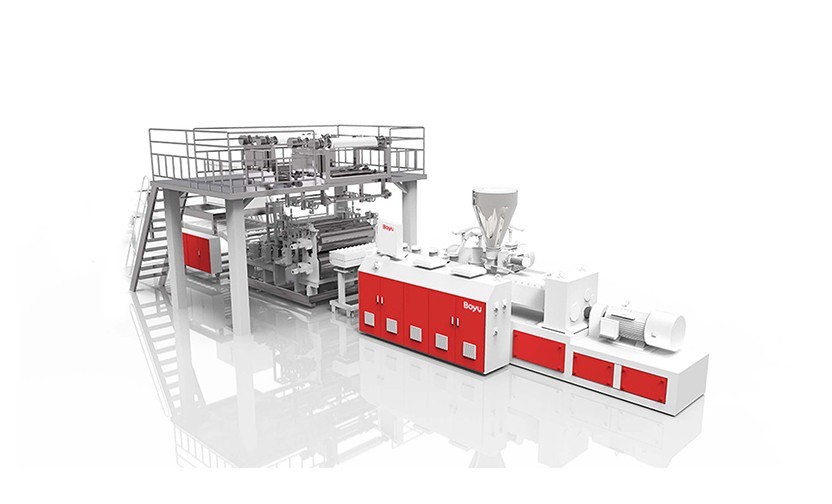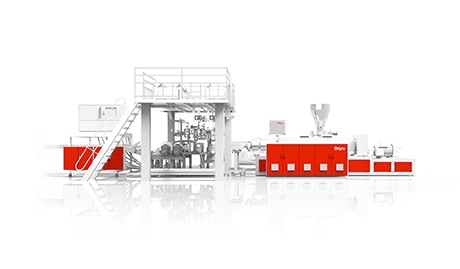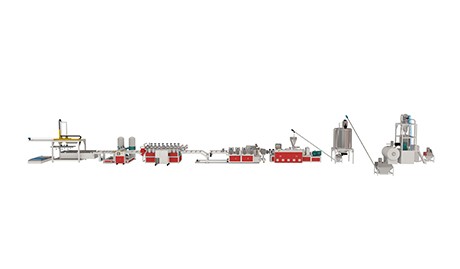How to Choose the Best Plastic Extrusion Materials
Nowadays, there are various types of plastic extrusion materials in the markets. Their usage is increasing dramatically. Advanced plastics can replace wood, rubber, and metal in some applications. Material selection for your custom extrusion can be a discouraging task, but it plays an essential role in plastic extrusion process.
Selecting plastic materials that fit your products' needs, and standards can quickly standardize your production from the beginning. In this regard, it will be helpful to clarify your products' functions in the design stage of the process.
This article will provide a breakdown of different types of plastic extrusion materials and some of the essential factors that should be considered during the selection process.

Types of Plastic Extrusion Materials
Plastic extrusion materials can be quickly identified if you know how to recognize them. Their commercial availability and molecular structure can be categorized under “thermoplastics”. Therefore, it is critical to understand what material properties are required for your application or products.
1. Commercial Categorization
Plastic extrusion materials can be classified into three categories: commodity, engineering-grade, and high-quality performance.
l Commodity Plastic: Commodity plastic is suitable for most applications and accounts for nearly 90% of all thermoplastic uses.
Polypropylene (PP): commonly used in diverse range of extrusion projects. It has excellent chemical and heat resistance. Also, at its low price, PP extrusions are usually bio-degradable.
Polyvinyl chloride (PVC): PVC extrusions provide flexible extrusion, available in various colors, grades and opacities at a low cost. PVC plastics also can be used in diverse range of products, including housing, railing, and medical-grade tubing.
l Engineering Grade Plastics: To improve the performance in some applications, engineering grade plastics are designed with unique combination of properties. Such as thermoplastic elastomers (TPE’s), polycarbonate (PC), polyamide (PA or Nylon), and acrylonitrile butadiene styrene (ABS).
High-Quality Performance Plastics: To meet the high-performance standards in a harsh environment, high-quality performance plastics are designed to have exceptional mechanical and thermal properties. Therefore, some expensive plastics are usually reserved for low volume, specialty applications (PEEK, PVDF, and PSU).

Molecular Structures’ Categorizations
All the plastic polymers have a combination of two molecular structures, amorphous and crystalline. During the process, the proportions will slightly change, but one central structure will remain.
l Amorphous: The molecular chains in amorphous polymers are either jumbled or freely moved when the polymers are pulled or pushed. This feature gives polymer great flexibility, elasticity, and impact resistance. Low shrinkage is one of the characteristics of amorphous polymers that can accommodate tighter tolerances. However, this structure has relatively low strength and poor chemical resistance.
l Crystalline: The molecular chains in crystalline polymers are ordered and locked in every place. This feature gives the polymers strength and rigidity. High degree of shrinkage is one of the characteristics of crystalline polymers which means it is difficult to hold tight tolerances. However, the crystalline structure has poor impact resistance and discloses a high degree of shrinkage.
Factors Considering in Material Selecting Process
l Temperature: Whether your plastic extrusion products will be used in a hot environment? If so, then you need to consider the thermal properties of your products. The repeated exposure to heat will distort plastics in shapes and lose their durability at the same time. Therefore, It is always critical to consider what is the extreme environment your products will be used.
l Environment: Understand where you will use the plastic products can narrow down the materials’ selection from the beginning. If the products are used underwater or in contact with any liquids, then the extrusion plastics should be water-resistant. Likewise, products that will be in contact with chemicals will need to be non-corrosive. Other environmental factors also need to be considered when choosing extrusion materials.
l Durability: Consider how much pressure and weight the plastic products will undertake before selecting the extrusion materials. Suppose the products are required to hold heavy cargo or subjected to sudden impact or frictions. It is vital to choose the materials that can withstand such forces.
l Requirement: The food and medical industries' requirements are strict regarding the grade of plastic used to ensure the reliability of products. In addition, recyclability is an essential consideration when choosing the materials, which can help you saving money and improve the manufacturing process.
l Appearance: At the finishing stage of the products, the appearance of the plastic products is another factor that we need to consider. If you want your products to have a specific color or outlook, certain plastics may produce the desired effects.

Conclusion
We at Boyu will provide a professional advice team to help you find out which material type will be the best for you.
Boyu specializes in producing PVC floor extrusion for over 20 years of experience. We invented our patented SPC floor equipment machinery with advanced extrusion technology.
If you would like to discover more about what plastic extrusion materials are the best for your business. Please don’t hesitate to contact us.





